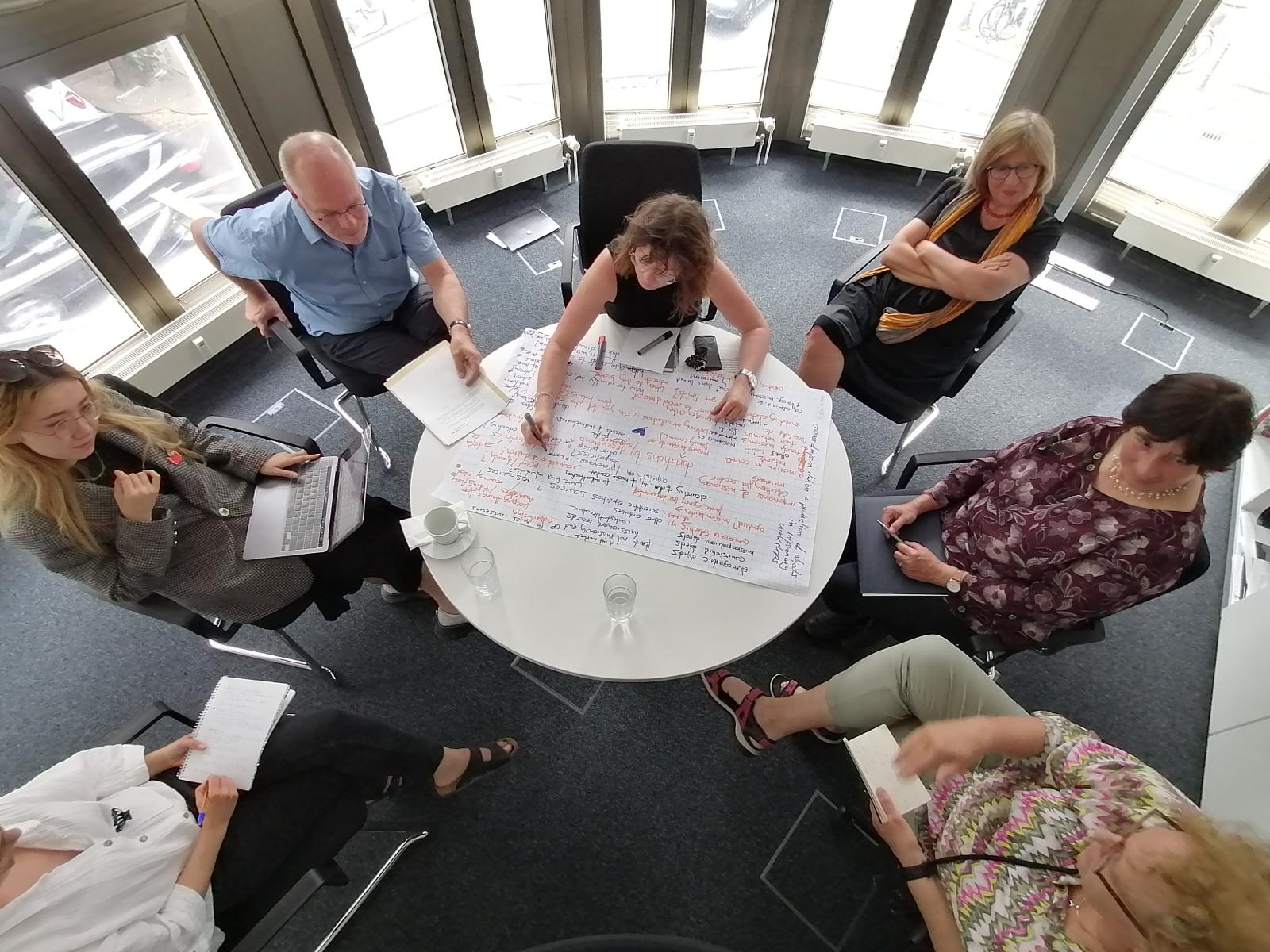The atmosphere at the workshop “Defining Missionary Collections and Collecting” in Berlin was very dynamic, with interdisciplinary dialogue and lively debate. International scholars and students from various disciplines came together to explore the multifaceted world of missionary collections.
Supported by the German Lost Art Foundation, the workshop was organised by Jan Hüsgen and Markus Scholz, who were responsible for establishing the subsidiary working group on “Missionary Collections” as part of the Colonial Provenances Working Group. One key topic at the workshop was the provenance of items in missionary collections. Closely connected to this issue is the question of colonial links between missionary religious orders, the colonial powers in question and the population groups whose objects were collected.
But what is the definition of a missionary collection?
One focus was on coming up with a comprehensive definition of historical mission collections that would be as universally valid as possible while at the same time covering a wide range of aspects. This breadth was important, not least because workshop participants each contributed their own specialist expertise to the reappraisal of museums dedicated to mission history. Yet it quickly emerged from the discussion that this diversity made it much more difficult to arrive at a single definition. Does a mission collection have to have been created by a missionary, or is it enough for it to have been passed on to a museum by the collector? Does the collection have to include items from day-to-day missionary life, or could it contain entirely different objects that were collected more by chance within a missionary context?
Exploring the mission collections: structures, practice and indirect contexts
By way of an introduction, the workshop made use of the innovative “World Café” concept to get participants to gather in small groups. This enabled them to share their perspectives and discuss to what extent missionary collectors differ from other actors who collected ethnological objects.
At one table the focus was on the institutional aspect of acquisitions by missionary orders that were intended for collections in missionary museums. What exactly were the local structures that the missionary brothers and sisters created for their day-to-day activities? Did these differ from one missionary society to the next? And how were these structures used to get the objects taken to Europe?
The next perspective focussed on the actual practice of collecting, i.e. both the methodological approach and the motivation for doing it. Was the collecting done on behalf of museums, universities or private collectors in Europe, for example, or were collectors acting on their own initiative? Did this differ depending on the type of missionary society and its philosophy? Did it make a difference whether the religious community in question was favourably disposed towards science and scholarship, for example? Why were specific objects relating to particular topics collected while others were omitted? Were the objects acquired by means of exchange, donated as gifts, purchased, or possibly even taken by force? What purpose did the collecting serve – did the collectors expect to benefit from it? Who were the missionary brothers and sisters who engaged in collecting activities or created private photograph albums? What were their roles beyond their pastoral work and how might this have influenced their collecting activities? How did the collections find their way to Europe?
The third room focused on collections that are not immediately perceived to derive from missionary contexts, such as botanical or zoological type specimens at natural history museums or collections that were donated to museums as third-party bequests. In some cases missionary religious orders acquired items and collections for their own museums by purchasing them, so these items were not collected by the orders themselves. Should private bequests to the church also be categorised as being of “missionary” origin? Above all, it became clear in the discussion that differing significance was and still is attributed to objects according to who owned them and when.
Missionary brothers and sisters – were they doing more than just charitable pastoral work?
There was intense debate at the workshop as to how missionary collections were linked to colonial structures. How did unequal power relations, violence and racism manifest themselves in the collections, for example? What knowledge is needed in order to be able to grasp this sensitive dimension? And to what extent do unequal power relations from the colonial era continue to persist in Germany, in the territories of the societies of origin, and also in the missionary museums and collections themselves? In the talks, examples were cited that illustrated the diversity of the collecting activities pursued by missionary societies and by individual missionary brothers and sisters (as travellers, traders, private individuals or scholars). This reflected the differing forms of missionary collecting and indicated how the day-to-day lives of the missionary brothers and sisters were interwoven with those of the societies of origin. Based on these insights, workshop participants felt it was important to continue to regard the terms “mission” and “missionary” as being central to provenance research.
Based on an analysis of the missionary philosophy of the various religious communities and the infrastructures set up by missionary brothers and sisters, the gender perspective was seen to be important, too: like women in general, missionary nuns often remained invisible in writings and correspondence and had subordinate positions of power within the missionary orders, yet they played a key role in missionary work in the colonies. This raised the question of the specific nature of their collecting activities: Did the way they collected or the objects they acquired differ from those of the missionary brothers? This point is also of interest because the nuns, as women, maintained different relations with the local population. This in turn gave rise to more general questions of how objects and collections can reflect missionary history in different ways and whether and to what extent missionary activity was necessarily an aspect of colonialism. Contexts of injustice and violence were then discussed, and there was a critical questioning of the circumstances of acquisition, origin, production, appropriation and ultimately museumisation. In the course of workshop discussions, participants addressed the differing contexts of injustice in their research work. Here it quickly became clear that it is important to differentiate between religious communities and individuals.
The potential offered by provenance research? – A bridge for interdisciplinary collaboration and a way of shaping the future
After two days of intense workshop activity, it was hoped that provenance research would provide a contact zone in which curators, scholars, communities of origin, religious orders and interested parties could come together to share needs, expertise and resources more effectively. Here, particular emphasis was given to the need to involve missionary orders and societies themselves in the work done by provenance researchers; it was also seen to be important to subject historical missionary collections and their origins to ongoing interdisciplinary investigation. Here it will be important to go beyond analysing past events and focus on the significance of these collections for the future, especially for the communities from which the collected objects originate.


